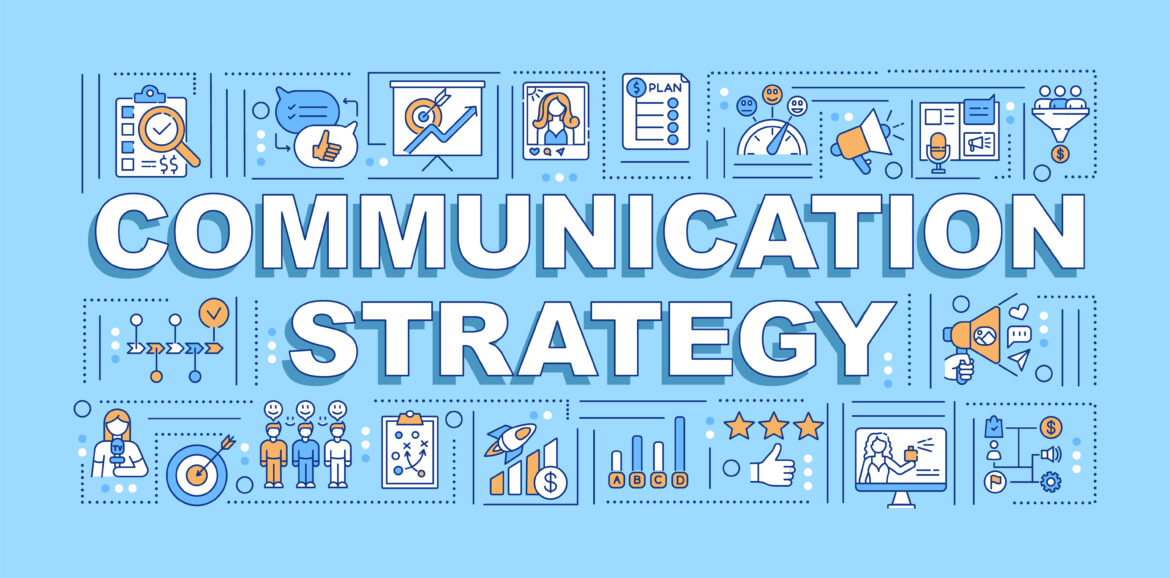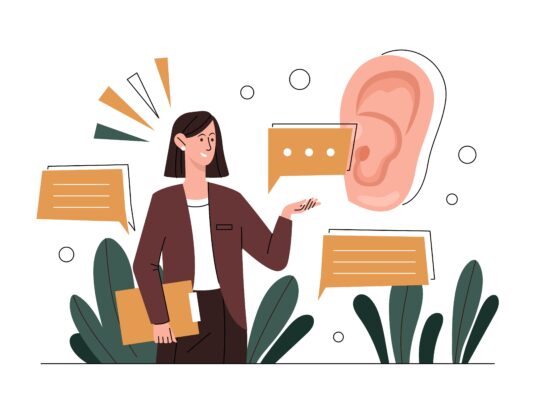| Creating a Communications Strategy | ||
| Instructor: Mory Fontanez | ||
| Released: 9/29/2020 | Course Details 34m Intermediate | |
| Skills Covered Communication Strategy | Course Link | |
| Professional Certifications and Continuing Education Units (CEUs) Project Management Institute – PDUs: 0.5 hour | ||
What is a Communication Strategy?
Components of a communications strategy
Communication Strategy Components
- Messages – Does your message require a visual?
- Audience
- Channel
- Cadence – For people to remember something, the rule of thumb is to repeat it three to five times, in different ways.
- Measurement
Who to include in the development of your strategy
Each element of your strategy is going to require the feedback, information, or approval of someone within your organization.
Start with business goals. It’s essential that you really understand what your organization or team is trying to achieve.
Engage marketing and design at the beginning of the process to ensure your strategy is complementary to their efforts.
Plan for the resources you need to implement your strategy
It is essential that your communications are shareable, quotable, and likable.
The format should fit the message.
Do you need a script, a camera, editing software?
Resource planning includes thinking about external partners, spokespeople, vendors and tools. Where do your messages need to go to get the most attention?
Partnerships can be beneficial in distributing your communications or achieving your organization’s goals. Engage partners early and often to build a strong relationship and integrate your communications strategies.
Creating Your Communications Strategy
Personalize your communications strategy
Audience-centric strategy sits at the intersection of your goals and objectives and what your audience needs.
Think about who you want to reach and what similarities and differences exist in that group. Stratification of big groups is the key to making sure you’re talking to people in a way that makes them feel you know and understand them.
Messages will have impact if they reach the intended audience in a place where they can engage. To customize communications, start with what you want to say, then think about what you know about the audience.
Communicate clear and actionable messages
Actionable communications is about inspiring others to take an action either on your or someone else’s behalf. (Like – click here to learn more)
Build purpose into your communications strategy. Use purpose to inspire others. Think about what people need to feel inspired and build that into your strategy.
Action is a natural part of how we communicate today. Provide an action for your audience to take so that your message can spread to others.
Planning for a crisis
The key to good crisis management is good crisis communications planning. To include crisis preparedness into your strategy, begin with scenario planning. The scenario planning exercise is a free-flow brainstorm where all experts or stakeholders put all possible scenarios on the table.
Then rank and prioritize starting with the worst scenario for your business, customers and employees.
Remember that trying to cover something up is the wrong decision.
Implementing Your Strategy
Build your communications team strategically
Communication is the vehicle for your organization to convey their objectives and build relationships with their audience.
Communications Strategy Team
- Subject matter experts
- Audience wants to hear from them
- They lend credibility to the strategy
- Legal representative
- Human Resources
Include people in your organization who have something important to communicate or who can help you execute your plan.
It is imperative that your strategy is representative of your employee base and your customers.
Make your communications strategy resonate across channels
You need to understand what your audience wants and needs but also where they get their information.
Three Part Model – Owner, Earned and Social
Owned – all the channels your organization owns such as website, emails, newsletters, brochures and even advertising/marketing.
Earned – information about your organization because you’ve earned their attention. These include media coverage such as print, radio, or TV. Also includes news or information websites like Buzzfeed for example.
Social – includes both your organization’s social media channels and the social media channels of others. For example, YouTube, Instagram and TikTok.
Owned channels should host most of the information so that you can link your audiences back to your own platforms. Earned channels should be used for things that are newsworthy. Social media is where you want to see as much brand or project activity as possible.
A good social media presence means you have enough content to show up on that platform consistently and thoughtfully. Don’t be everywhere at all once, build a strong presence on one platform first. A good communication strategy should be cross channel.
Assess your communication strategy
KPI – Key Performance Indicator: A measurement for how something is performing.
Social Media KPIs
- Shares
- Likes
- Clicks
- Views
- Comments
- Time on site
- Downloads
- Site Traffic
Building KPIs into Your Strategy
- Measure what’s working
- Change what’s not
- Celebrate success of your objectives
 | Remember! To experience the full benefit of this guide, I highly recommend you watch the full training session. |






